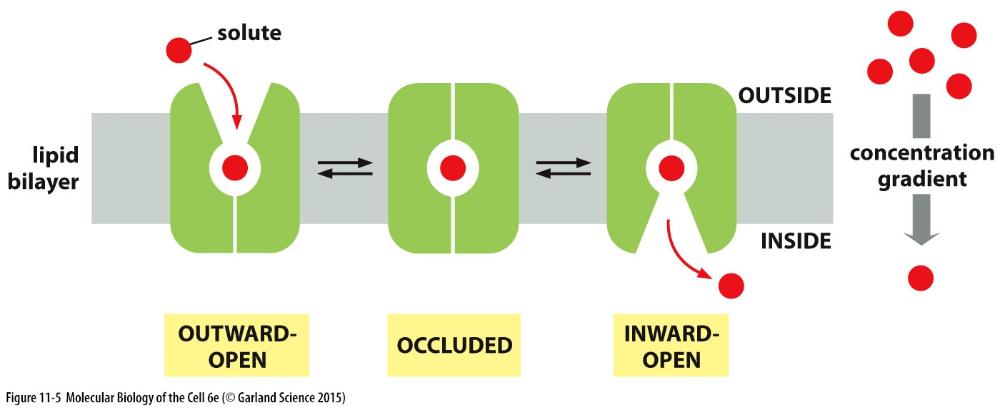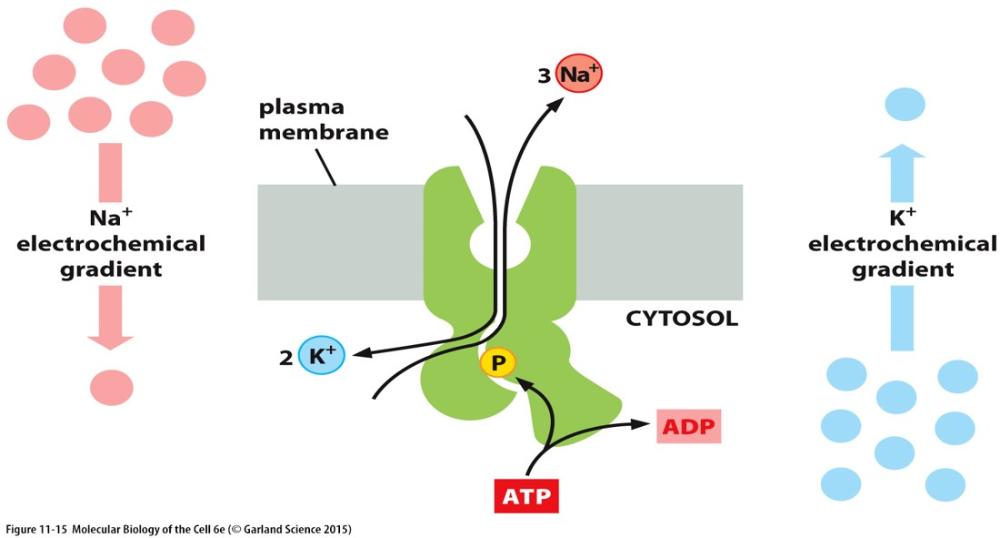Instructions for Side by Side Printing
- Print the notecards
- Fold each page in half along the solid vertical line
- Cut out the notecards by cutting along each horizontal dotted line
- Optional: Glue, tape or staple the ends of each notecard together
Adv Cell Bio midterm
front 1 What is the cell membrane? | back 1 defines the boundary of the cell and keeps water-soluble molecules separated both within and outside the cell |
front 2 The cytosol is- | back 2 liquid in the cells where all reactions take place |
front 3 What is the lipid bi-layer? | back 3 a fluid, dynamic, in continuous flux and acts as a barrier to the passage of water-soluble molecules |
front 4 What is a glycoprotein? | back 4 a protein with a carbohydrate attached |
front 5 What is a glycolipid? | back 5 lipid with the carbohydrate attached |
front 6 What are the major lipids in the cell membrane? | back 6 phosphoglycerides, sphingolipids, and sterols |
front 7 What does the fluidity of a lipid bilayer depend on? | back 7 its composition |
front 8 The chemical composition of a lipid determines what properties of the membrane? | back 8 physical |
front 9 What is cholesterol composed of? | back 9 a small polar head group, a ring structure, a non polar tail |
front 10 How does the addition of cholesterol affect the membrane? | back 10 the more cholesterol that is present in the membrane, the more rigid and firm the membrane becomes. |
front 11 Lipid molecules can take up which shape(s) in an aqueous environment? | back 11 micelle, lipid bilayer |
front 12 What is a liposome? | back 12 A spherical vesicle that forms to protect the hydrophobic tails and is made of one or more phospholipid bilayers |
front 13 What are the actions of phospholipids? | back 13 - diffuse laterally within the bilayer - can flex and rotate around their axis - can flip from one leaflet to another |
front 14 What are the properties of unsaturated phospholipids? | back 14 has C=C double bonds in their tails, have a flex (or kink) that prevents them from packing tightly together |
front 15 What are the properties of saturated phospholipids? | back 15 no C=C double bonds, can pack tightly in the membrane |
front 16 What is a glycolipid? | back 16 has fatty acid tails, with heads made of glycans. they are sugar-lipid hybrids |
front 17 What is an integral protein? | back 17 a protein that is embedded within the lipid bilayer |
front 18 What is a peripheral protein? | back 18 a protein that remains on the outside of the lipid bilayer |
front 19 What is the process of adding sugars to proteins called? | back 19 Glycolysation |
front 20 The cortical cytoskeleton does what for the membrane? | back 20 gives mechanical strength and restricts membrane protein diffusion |
front 21 Lipid bilayers with no proteins are impermeable to- | back 21 Ions |
front 22 What is the function of a transport/carrier protein? | back 22 bind to a certain solute that they transport, undergo conformational changes to transfer the solute across the membrane |
front 23 What is the function of a channel protein? | back 23 minimal interaction with the solute to be transported, and no extensive change conformation. |
front 24 What is passive transport? | back 24 when molecules are transported along the concentration gradient and can be mediated by either channel or carrier proteins |
front 25 What are some examples of passive transport? | back 25 channel-mediated, transporter-mediated, simple diffusion |
front 26 What is active transport? | back 26 mediated by carrier proteins that carry molecules against the concentration gradient. |
front 27 What are some examples of active transport? | back 27 sodium-potassium pump, endocytosis, exocytosis, calcium pumps |
front 28  What is happening in this picture? | back 28 The conformational change of a carrier protein mediates passive transport of the solute across the membrane |
front 29 In carrier-mediated diffusion, what is the rate of transport? | back 29 rate of transport is limited due to the requirement of conformational changes of the carrier protein. |
front 30 In simple diffusion, what is the rate of transport? | back 30 always proportions to the concentration of molecules available for transport. |
front 31 What is the function of coupled carriers? | back 31 transport a molecule against the gradient by allowing the passage of a molecule along the gradient |
front 32 What is the function of ATP-driven pumps? | back 32 couple an uphill transport with the hydrolysis of ATP, uses energy to carry a molecule against the gradient |
front 33 What is the function of light-driven pumps? | back 33 uses energy from light to carry molecules against the chemical gradient |
front 34 What is the process of transcellular transport? | back 34 process of moving substances across polarized cells (epithelial and endothelial) using membrane transport proteins |
front 35  What is occurring in this picture? | back 35 the Na+/K+ pump is transporting both Na+ and K+ ions against their concentration gradients in opposite directions driven by ATP |
front 36 For every ATP hydrolyzed, ________ are pumped out and _______ are pumped in | back 36 3 Na+, 2K+ |
front 37 When do voltage-gated channels open? | back 37 in response to a change in voltage across the membrane |
front 38 When do ligand-gated channels open? | back 38 in response to a ligand binding the channel, can be activated by an intracellular ligand (ion, nucleotide) or extracellular ligand (neurotransmitter) |
front 39 When do mechanically-gated channels open? | back 39 in response to mechanical stress |